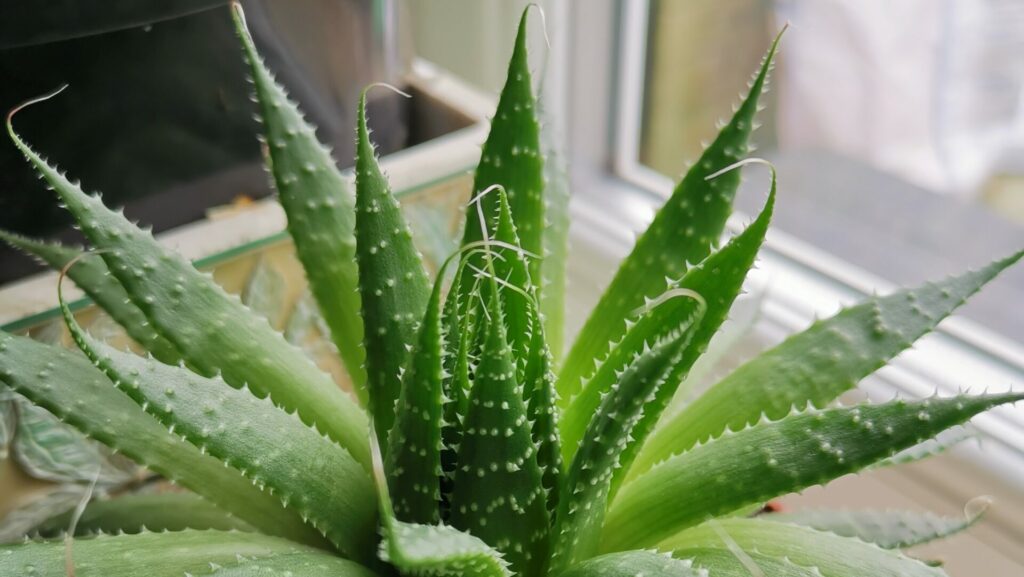
Many plant-lovers start their plant life by growing low-maintenance plants such as succulents – aloe veras being one of the many in the family. The gorgeous plant – also called Babosa – with green fleshy leaves with jagged edges brings some character to any room. Aloes are incredibly easy to propagate and care for and, in most cases, like being left alone.
While aloes don’t require much care, they can be fragile when not kept in desired conditions. If your aloe has somehow gotten damaged and you are worried about it dying on you, don’t lose hope! There are several ways to save an aloe plant.
Caring for an aloe vera
The best way to keep your aloe plant healthy is to avoid any damage to it in the first place. Every aloe owner should know about the preferred environmental conditions of the plant and how to take proper care of it.
Like many other house plants, such as ZZ plants and prayer plants, aloe vera plants are pretty low maintenance. As aloes are in the succulents family, they store water in their leaves. That means you should not get carried away with watering your new plant – watering after every 2-3 weeks is enough. Always check the soil before watering, and only do it if the top part of the soil has dried out. It is crucial to allow any excess water to drain away to prevent root rot. Let your aloe sit in a bright indirect sun as they like some light. Yet, harsh direct sunlight can burn the leaves.
It’s a good idea to give the leaves a quick wipe now and then to avoid any dirt building up. And the plants should be repotted every few years when they outgrow their pot. That’s about it – caring for aloe vera is incredibly easy!
How to save an aloe plant with root rot?
Root rot is the most common issue when it comes to aloe veras. Dying roots cannot absorb nutrients from the soil, causing the plant to eventually die. But if treated before it spreads too much, you can revive your plant!
Unfortunately, it is difficult to notice any symptoms of root rot at the early stages as there are no visible signs. The first sign that often appears is the leaves becoming yellow. At a later stage, the leaves turn brown and mushy. If you notice the color of your aloe leaves fading or changing and any part of the plant becoming mushy, you can suspect root rot. Take action while it’s still possible to save your plant.
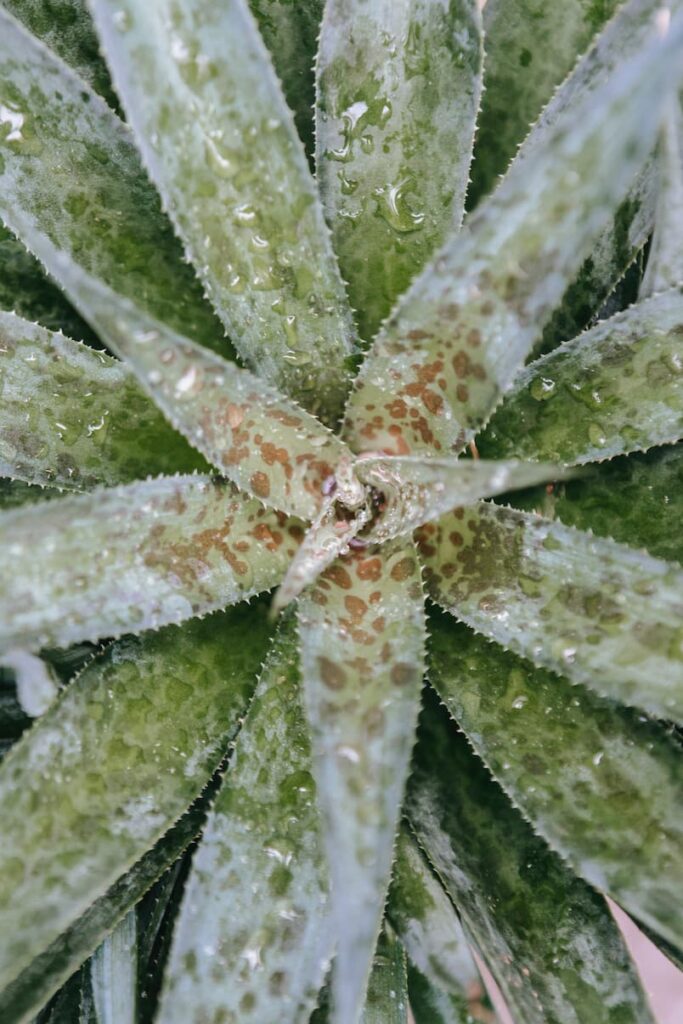
How to revive an aloe plant easily?
There are two common reasons behind root rot – overwatering and fungal infection. Let us go through the steps to take to revive your plant.
- Gently remove the plant from its pot. Try twisting the pot until it detaches from the soil, and you can pull it away from the plant. Moving the plant too much can damage the already suffering plant.
- Once you have your aloe out of its pot, loosen the soil around the roots so you can examine the damage.
- Identify the rotting roots. You can notice the dying roots by their black color and mushy texture. You’ll want to get rid of all the damaged parts and only leave the healthy ones.
- Cut off the damaged roots. If the whole root ball is infected, clear away it. Always use a sharp, sterilized knife or scissors for it.
- Once you’re finished with the roots, examine the rest of the plant. Any dying leaves should be cut off from the plant.
- Replant your aloe in a clean pot filled with well-draining grainy soil. You can just repot it if you still have some healthy roots on your plant. If you were forced to remove the whole root ball, let the cut harden over before potting. To do that, leave your aloe vera in a warm place for a few days.
- Very slightly mist the soil before planting your aloe but avoid watering for a few days up to a week after repotting.
Once your aloe has gotten used to its new pot, go back to providing regular care for it.
How to save an aloe plant with cold damage?
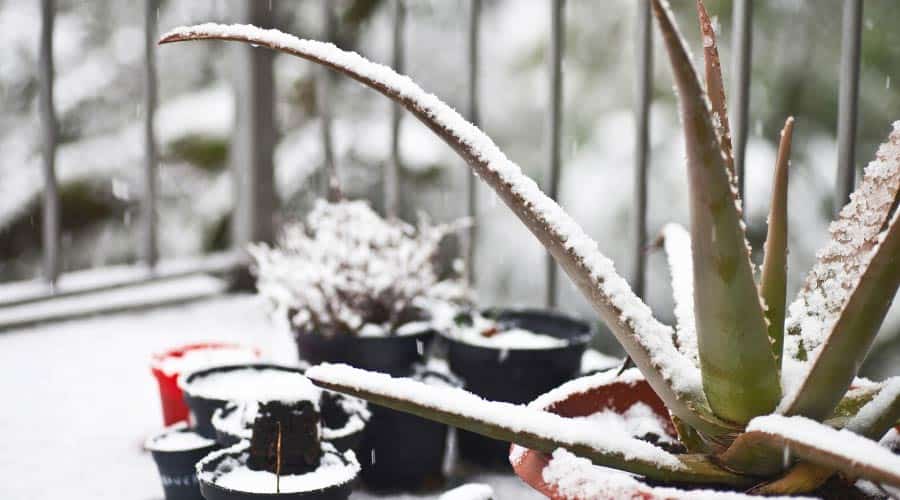
You don’t have to worry about frost when it comes to indoor plants. But if you like to leave your aloes in the garden during the summer, remember to bring them back inside as soon as it gets chillier!
Aloes are very sensitive to cold. This makes sense, as the plants grow in tropical climates naturally and are used to warm temperatures. Leaving your plant out at a temperature below 40 degrees (5 degrees Celsius) can badly damage it. However, it is possible to nurse a damaged aloe vera back to its health.
My aloe plant froze, what to do?
- Move the plant to a warm and bright spot. However, you want to avoid direct sunlight.
- Avoid watering the plant for a week or so. This allows for any damaged parts of the plant to dry out.
- You can clear away any damaged parts of the plant when it has dried.
- If your plant looks severely damaged, remove it from its pot and examine the roots. In case of infected roots, cut out them before repotting your plant in a fresh aloe vera potting mix.
You will know that your herb has recovered from the cold damage once you see new green growth appearing.
Aloe leaves turning brown, how to save them?
First of all, you should identify the main reason why is the herb dying, since the solution depends on that. Let’s see the most frequent problems!
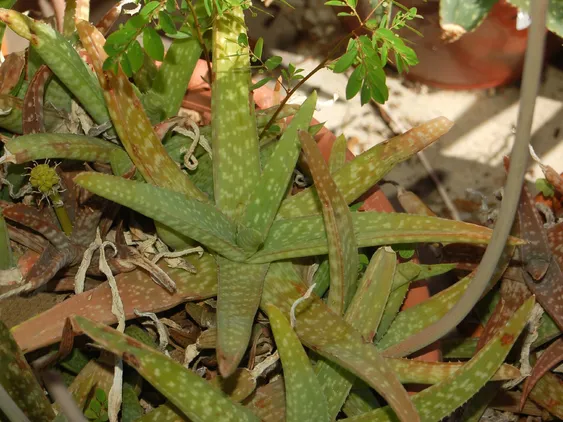
Why is my aloe plant turning brown?
Aloe plants most frequently turn brown due to too much moisture. Let’s see how to save an overwatered aloe plant. Luckily, It isn’t too hard. Just wait until most – 3/4 – of the soil feels dry. If it doesn’t help, don’t worry, you still can save the overwatered herb. Remove the plant from the pot, and take out the wet soil. Inspect the roots, and cut off the soggy and black ones. Put back the plant into the pot, and replace the soil with dry.
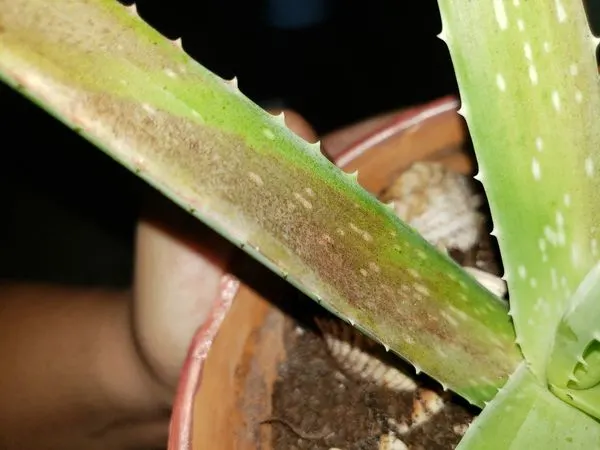
The second common cause is sunburn. Just like aloe herbs don’t like cold environments, they can’t handle too hot conditions when not acclimatizing first. Aloes can thrive in full sun, but moving them from shade into straight sunlight suddenly can result in a sunburned aloe plant.
Typical signs of a sunburn on aloes are brown spots on the leaves, the leaves turning brown or reddish, and softening of the leaves. You can also suspect sunburn if you have to water your plant noticeably more as it dries out fast. To revive your damaged plant, follow a few simple steps.
- Immediately remove the aloe vera from intense sunlight. Don’t deprive the plant of the sun completely, but move it into a more shady area. Morning sun followed by afternoon shade is recommended.
- Pour water into your plant. While aloes don’t like frequent watering, a burnt plant will appreciate a good shower. Ensure the pot has a drainage hole to get rid of excess water.
- Cut off any leaves that are badly damaged as it’s not possible to revive them – they can no longer photosynthesize.
There is no need to remove a whole leaf if only a small part is burnt – while the damaged part can’t be recovered, it also doesn’t damage the plant further. You can wait for new growth and then remove the damaged part of your plant instead.
Frequently Asked Questions
Freezing temperatures can cause severe damage to your aloe plant that isn’t always fixable. But if the plant still has some green leaves, try to save it! Remove any dead parts from the plant, place the damaged plant in a warm spot, and don’t water it for a week.
How to save an aloe vera plant without roots?
A common cause for an aloe plant to lose its roots is overwatering. But there is still a way to save the plant – use the cuttings or offshoots to propagate the plant and grow a new healthy one.
How to save an aloe plant from dying after transplanting?
If your aloe vera plant starts dying after transplanting it, it may be due to too much water or a lack of drainage. To bring your plant back to life, gently transplant it into fresh soil again and avoid watering for a week. Use well-draining soil, and always check if the pot has some drainage holes.
How to save a burnt aloe plant?
First of all, remove the aloe vera from direct sunlight. After that, water your plant, but don’t give too much for once. Do it more frequently with less water. Finally, cut off the leaves which are turning brown. They can’t photosynthesize, but they need nutrients.
